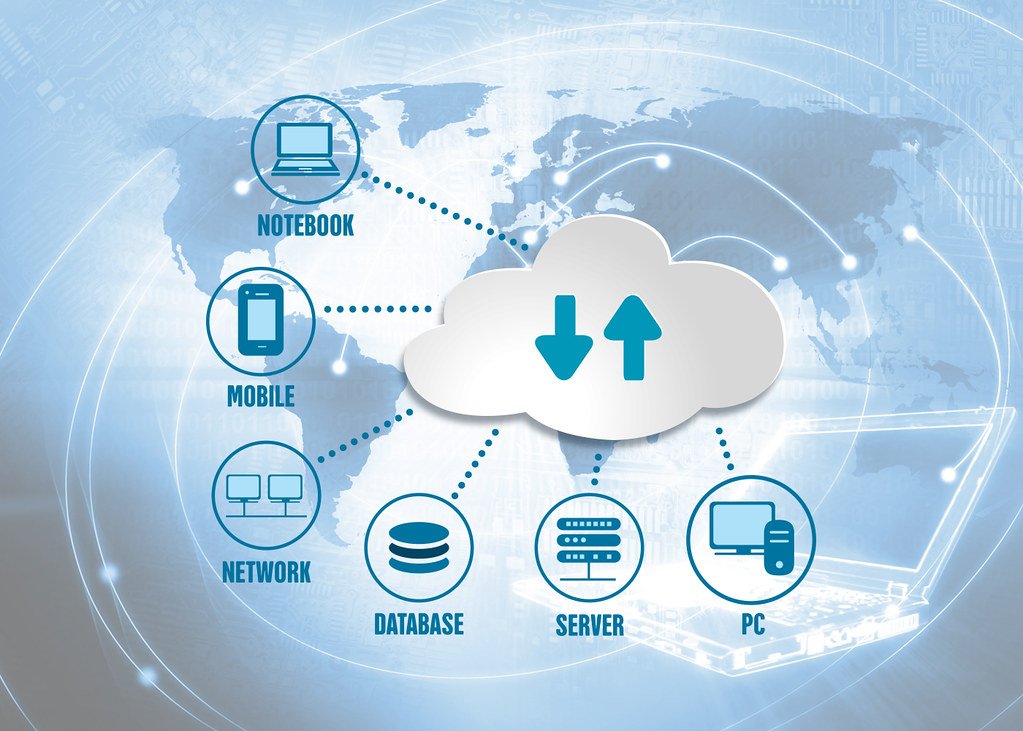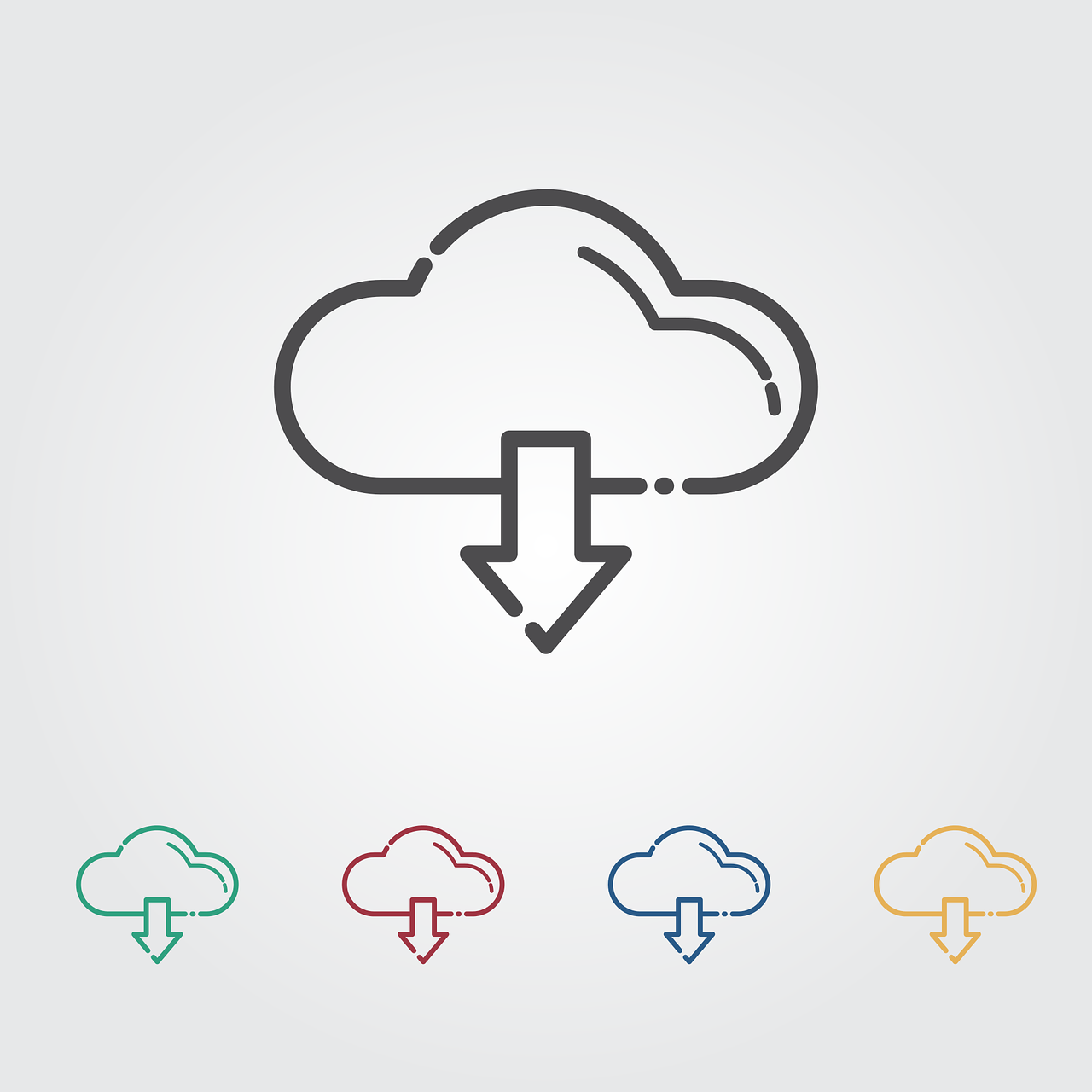I. Introduction to Enhancing Cloud Security through Design
When it comes to safeguarding data, businesses must consider the design of their cloud-based systems. By implementing sound security design principles, companies can safeguard their data and protect themselves from potential cyberattacks.
1. Implement a Secure Infrastructure
To protect your data from unauthorized access and theft, it is critical to build a secure infrastructure. This includes using encryption techniques and employing a firewall and intrusion detection system (IDS) to monitor network traffic for malicious activity.
2. Regularly Back Up Data
Regularly backing up your data ensures that you have a copy of your information in case of an emergency. You can also use backup software to restore files should there be a loss of data due to a cyberattack or other incident.
3. Use Encryption Properly
If your data must be transmitted over the internet, make sure that it is encrypted using strong cryptography methods such as AES 256-bit encryption with HMAC authentication. This will help prevent unauthorized access by criminals or hackers who might try to steal your information via intercepted communications or through malicious code embedded in emails or web pages visited by users on your network.
4. Harden Your Systems Against Attack
In order to thwart any cyberattacks that might attempt to compromise your systems, you should install antivirus software, patch relevant systems regularly, exercise caution when clicking on links in email messages and refrain from downloading unsolicited attachments from unknown sources. Additionally, you should create strong passwords for all user accounts and protect them with a two-factor authentication system.
5. Train Employees on Security
You cannot rely on employees to take appropriate security measures on their own. Accordingly, it is important to provide training and guidance on how to protect data and systems from unauthorized access. This should include information on the prevention of cyberattacks, the use of safe online practices and effective password management techniques.
By implementing sound security design principles, businesses can safeguard their data and protect themselves from potential cyberattacks.
II. Understanding Common Cloud Security Threats
Understanding common cloud security threats is an important step in Enhancing Cloud Security. Cloud-based applications and services are growing increasingly popular, but they also come with the inherent risk of being accessed by malicious actors.
Here are four key cloud security threats to be aware of:
1. Injection flaws – attackers can exploit injection vulnerabilities in web applications to inject traffic into the application and access sensitive data.
2. Cross-site scripting (XSS) attacks – attackers can exploit cross-site scripting attacks to inject malicious code into web pages, which then runs when users visit those pages. This can allow attackers to steal password information or other confidential data.
3. Broken authentication and session management – improper authentication and session management schemes can leave applications and servers open to attack by unauthorized users who have already stolen user credentials.
4. Security misconfiguration – poorly configured systems and networks can leave your cloud assets vulnerable to attack from outsiders, either through data theft or cyberattacks that disable systems or cause them to crash.
To prevent these threats from occurring, make sure you undertake the following steps: Regularly review your applications for vulnerabilities Use best practices for authentication and session management Harden against common attack vectors such as injection flaws, XSS attacks, broken authentication schemes, and insecure communications
2. Establishing Cloud Security Policies
Cloud security policies are essential for protecting your cloud assets from malicious actors. They should include the following elements:
1. Authentication and session management policies – These policies define how users access your applications and services, and specify the types of authentication mechanisms (e.g., password, token, etc.) that are required.
2. Data protection and privacy policies – These policies outline how your company will handle user data and protect against unauthorized access.
3. Security measures for cloud-based systems – These policies define how your company will protect your systems against attack, including specifying which technologies you will use to secure your systems (e.g., firewalls, intrusion detection/prevention systems, etc.) and setting up monitoring capabilities to detect attacks as they occur.
4. Breach notification and response policies – These policies outline how you will notify affected users of a security breach and provide them with instructions on how to protect their data.
To ensure that your cloud security policies are effective, make sure you consult with an experienced cloud security consultant.
III. Designing Cloud Architecture to Minimize Risks
Cloud computing has revolutionized how businesses operate by providing on-demand access to resources, such as data and applications, across the globe. However, this same flexibility also presents new security challenges. To minimize risks, it is important to design a cloud architecture that takes these challenges into account.
One risk associated with cloud computing is data loss. If an organization’s data is stored in the cloud, it may be vulnerable to theft or damage if it is not securely protected. To reduce the risk of data loss, it is important to always ensure that the cloud storage solution used meets your organization’s security requirements.
Another risk related to cloud computing is cyberattacks. Cyberattacks are attacks that involve using malicious software or hardware to damage or disrupt systems or steal information. Cyberattacks can take many different forms, including those that target servers, networks, and end users’ personal information. To mitigate the risk of cyberattacks, it is important to deploy a cybersecurity strategy that includes measures such as updating software and installing anti-virus software.
Finally, another risk associated with cloud computing relates to compliance issues. As businesses increasingly adopt cloud services, they may face new compliance requirements such as regulations related to data privacy and information security. In order to comply with these regulations, organizations may need to move some of their business operations (such as data processing) into the cloud. By carefully planning which activities should be moved into the cloud and how they will be managed, organizations can minimize the risk of violating their compliance obligations.
IV. Implementing Security Measures for Data Protection

One of the most important aspects of data security is implementing proper measures to protect your data from unauthorized access. There are a number of ways you can go about accomplishing this, from using encryption to deploying firewalls and intrusion detection systems.
There are many different types of encryption software available, and it’s important to choose the right one for your needs. Some encryption programs use symmetric-key cryptography, which means the same key is used to encrypt and decrypt data. This type of encryption is relatively easy to protect against because it requires two separate parties (the sender and receiver) to have the correct key.
However, symmetric-key cryptography isn’t always the best option because it’s susceptible to brute force attacks. In a brute force attack, an attacker tries all possible passwords or keys until they find one that works. Unicode encoding can help solve this problem by making it harder for hackers to crack passwords without knowing them in advance.
Another type of encryption is called asymmetric-key cryptography. In this type of encryption, two separate keys are used: one called the public key and the other called the private key. The public key can be shared with anyone, while the private key must be kept secret by the user. When someone wants to send you a message encrypted with their private key, they use their public key to encrypt it first and then send it to you. You then use your private key to decrypt the message using their public key. This type of encryption is much more secure than symmetric-key cryptography because it’s not susceptible to brute force attacks. However, it’s also more difficult to use because you need to keep track of two separate keys.
Another way to protect your data is to deploy a firewall. A firewall blocks unauthorized access to your computer by blocking traffic from unauthorized IP addresses. Many firewalls also include features that help protect against online threats, such as intrusion detection and prevention systems (IDS/IPS). IDS/IPS systems monitor network traffic for signs of malicious activity and then report this information back to the administrator. This can help you identify and stop any potential attacks before they damage your computer or steal your data.
Data security is an important issue, and proper measures should be taken to protect your data from unauthorized access.Encryption software, firewalls, and intrusion detection systems are all good ways to protect your data from attack.
V. Best Practices for Detecting and Responding to Threats in the Cloud
Cloud security is a growing concern for businesses of all sizes, as threats against cloud-based systems continue to increase. There are a number of best practices that can be adopted to improve the security of your cloud-based systems, and these tips are based on the premise that cloud security is an ongoing process that should be continually improved.
1. Establish clear boundaries between your business and the cloud. The main purpose of establishing clear boundaries is to protect your data from being compromised by malicious actors who may have access to your cloud services. policies and procedures should govern how data is accessed and stored in the cloud, as well as ensure that you have adequate monitoring capabilities in place to detect any unauthorized activity.
2. Use strong passwords and encryption mechanisms. Passwords need to be complex enough to resist crackers but easy enough for users to remember. It’s also important to use strong encryption mechanisms on data stored in the cloud, as any unauthorized access could result in sensitive information being compromised.
3. Keep tabs on who has access to your data and what they’re doing with it. carefully monitor who has access to your data and what they’re doing with it, as anyone with access to sensitive information can potentially do damage if they’re not properly supervised. You can use various tools such as intrusion detection software or threat intelligence feeds to keep track of potential threats against your system.
4. Make sure you have up-to-date antivirus protection installed on all devices used in your cloud-based system. The same precautions that should be taken on desktop systems should also be taken on devices used in the cloud, as malicious actors are constantly developing new ways to exploit vulnerabilities in software.
5. Keep an eye on your infrastructure and make sure it’s resilient to attacks. Keeping an eye on your infrastructure and making sure it’s resilient to attacks is essential in ensuring that your cloud-based system remains operational when faced with a threat. You can use various monitoring tools to detect any abnormalities or unexpected changes, and then take appropriate action based on the findings.
VI. The Role of Encryption in Cloud Security

Cloud computing has revolutionized the way companies operate, with faster response times and lower costs. However, this newfound freedom comes with a price: data residing in the cloud is vulnerable to theft and attack.
One solution to this problem is encryption. Encryption scrambles data so that only authorized users can access it. By encrypting your data in transit and at rest, you can protect it from unauthorized access by hackers.
There are many different types of encryption schemes available, each with its own advantages and disadvantages. The most common type of encryption is symmetric-key encryption, in which the same key is used to encrypt and decrypt data. This scheme is easy to implement and requires very little setup time, but it’s vulnerable to brute-force attacks – i.e., attempts by hackers to guess the key password by trying every possible combination until they find one that works – because there’s only one key used for bothryption and decryption.
Another type of encryption is asymmetric-key encryption, in which two different keys are used: one for encoding (encrypting) data and one for decoding ( decrypting) data. This scheme offers greater security because it’s harder for hackers to crack than symmetric-key encryption, but it requires more setup time and requires two different keys – one for encoding and one for decoding – which must be kept safe from theft or loss.
One final kind of encryption option is called blockchain technology. Blockchain technology uses a decentralized network of computers to keep a permanent record of all transactions that take place on the network. This makes it immune to cyberattacks, as hackers would need access to the entire blockchain network in order to successfully attack it.
Overall, encryption is a critical tool for protecting data in cloud environments. By encrypting your data at rest and in transit, you can prevent unauthorized access and protect your data from being stolen or compromised.
VII. Identity and Access Management in Cloud Security
One of the main concerns when considering deploying cloud services is identity and access management. By design, clouds are inherently portable and elastic. This means that users can easily move between different cloud service providers without having to reconfigure their identities or access rights.
As a result, it is important to design an identity and access management solution that will work with the cloud-based model. There are a number of ways to do this, but one approach is to use a federated identity management system (FIM). FIMs provide users with an single login account for accessing multiple applications or systems. They also allow for centralized authentication and authorization functions, which makes it easier to manage user access rights.
Another approach is to use security tokens. Security tokens provide a way for organizations to securely identify individual users and restrict their access to specific resources. They can be used in conjunction with traditional authentication methods such as passwords or badges, or they can be used in place of them altogether.
Both approaches have their benefits and drawbacks. Federated identity management systems are more complex to set up but can provide greater flexibility in terms of user access rights. Security tokens require less maintenance but may not be as secure as passwords or badges when used in conjunction with traditional authentication methods.
VIII. Monitoring and Responding to Security Incidents in Cloud
Cloud security is not a one-time event, but an ongoing process that should be done regularly to ensure the security of your data. Cloud-based applications are continuously changing and evolving, making it difficult for organizations to identify and respond to potential security incidents.
Regular cloud security scans can help identify issues early before they become bigger problems. In addition, implementing appropriate firewalls and other layers of defense can help protect your data from malicious actors. When an incident does occur, you need to be prepared with a plan for responding.
Here are some tips for enhancing cloud security through design:
1. Choose a strong authentication and authorization strategy: Implement strong authentication and authorization mechanisms such as multifactor authentication and SSL offloading to protect data against unauthorized access. Use automated threat detection engines to identify possible threats before they become a problem.
2. Restrict access to sensitive data: Grant limited access only to authorized users who need it to do their jobs effectively. Keep track of user activity logs and alert administrators if someone seems suspicious or if user privileges are being abused.
3. Configure proper firewalls: Install appropriate firewalls at the network perimeter and within the application servers in order to protect your data from malicious actors outside the organization as well as inside the organization where sensitive data is stored (malicious insiders). Use intrusion detection/prevention systems (IDS/PETS) in conjunction with firewalls in order to detect unauthorized activity even before data is stolen.
4. Educate users: Make sure your users are aware of the importance of cloud security and the steps they need to take to protect their data. Encourage them to use strong passwords, keep activity logs, and use antivirus software.
5. Regularly update your applications and infrastructure: Keep your applications and infrastructure up-to-date with the latest security patches and updates. This will help protect against vulnerabilities that could be exploited by malicious actors.
IX. Conclusion
Cloud security is of paramount importance in today’s business world. To ensure that your cloud deployments are as secure as possible, it is important to take a design-based approach. By following these tips, you can create a secure cloud infrastructure that will protect your data and applications.
Design Considerations
When designing your cloud security strategy, consider the following factors:
-Identify the types of data that need to be protected
-Determine which applications should be hosted on the cloud
-Create a whitelist of approved applications and services
-Ensure that proper authentication and access controls are in place







